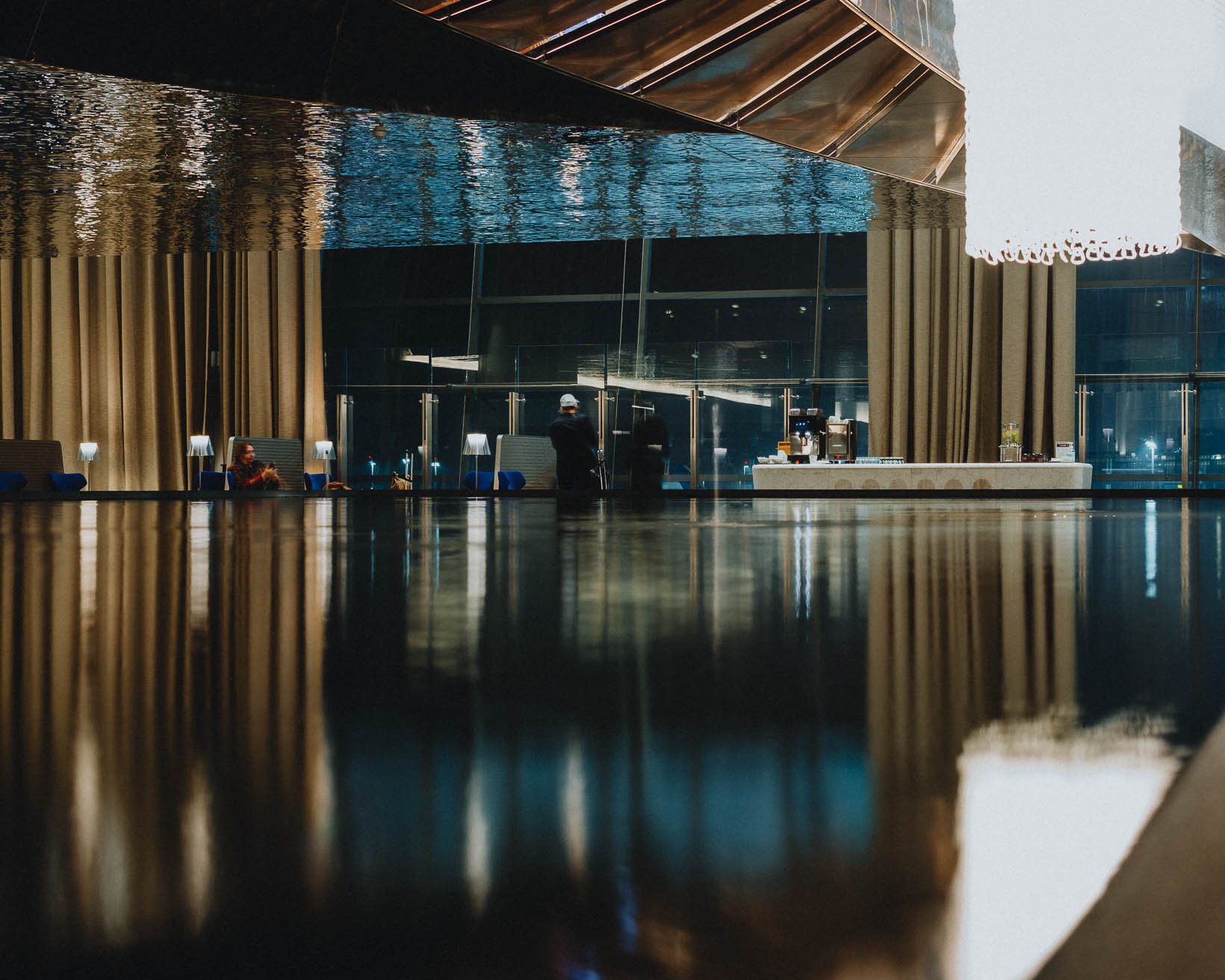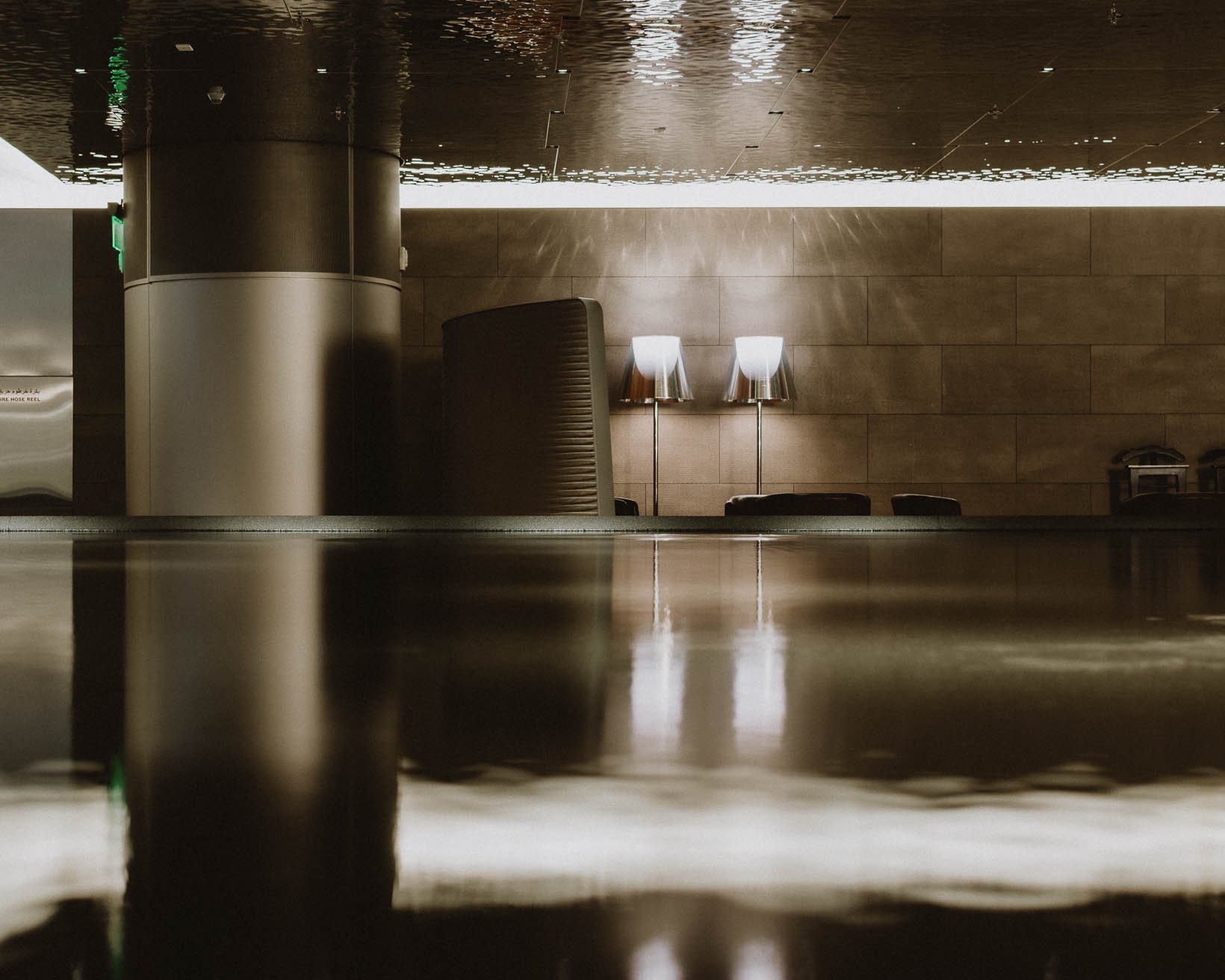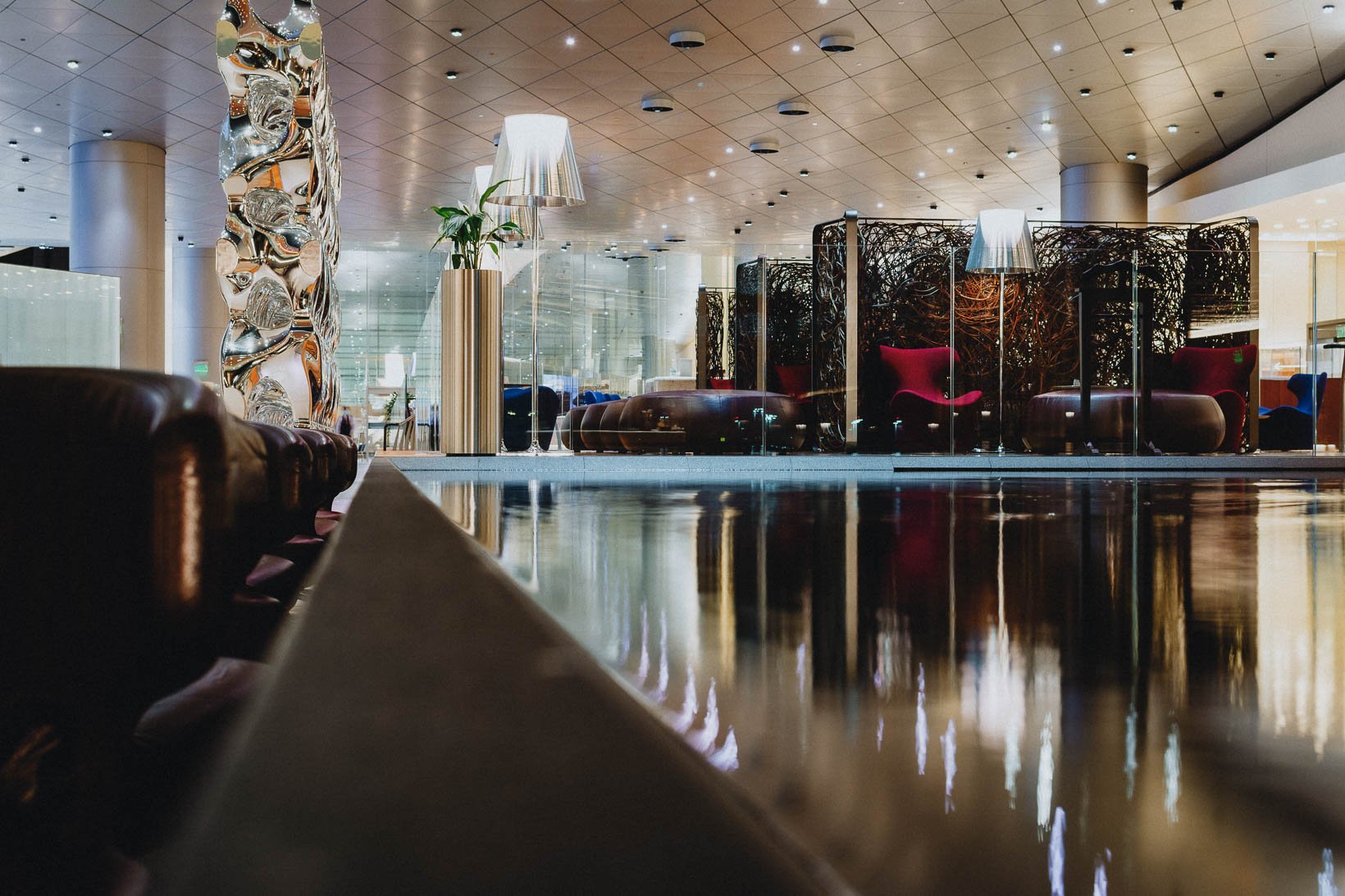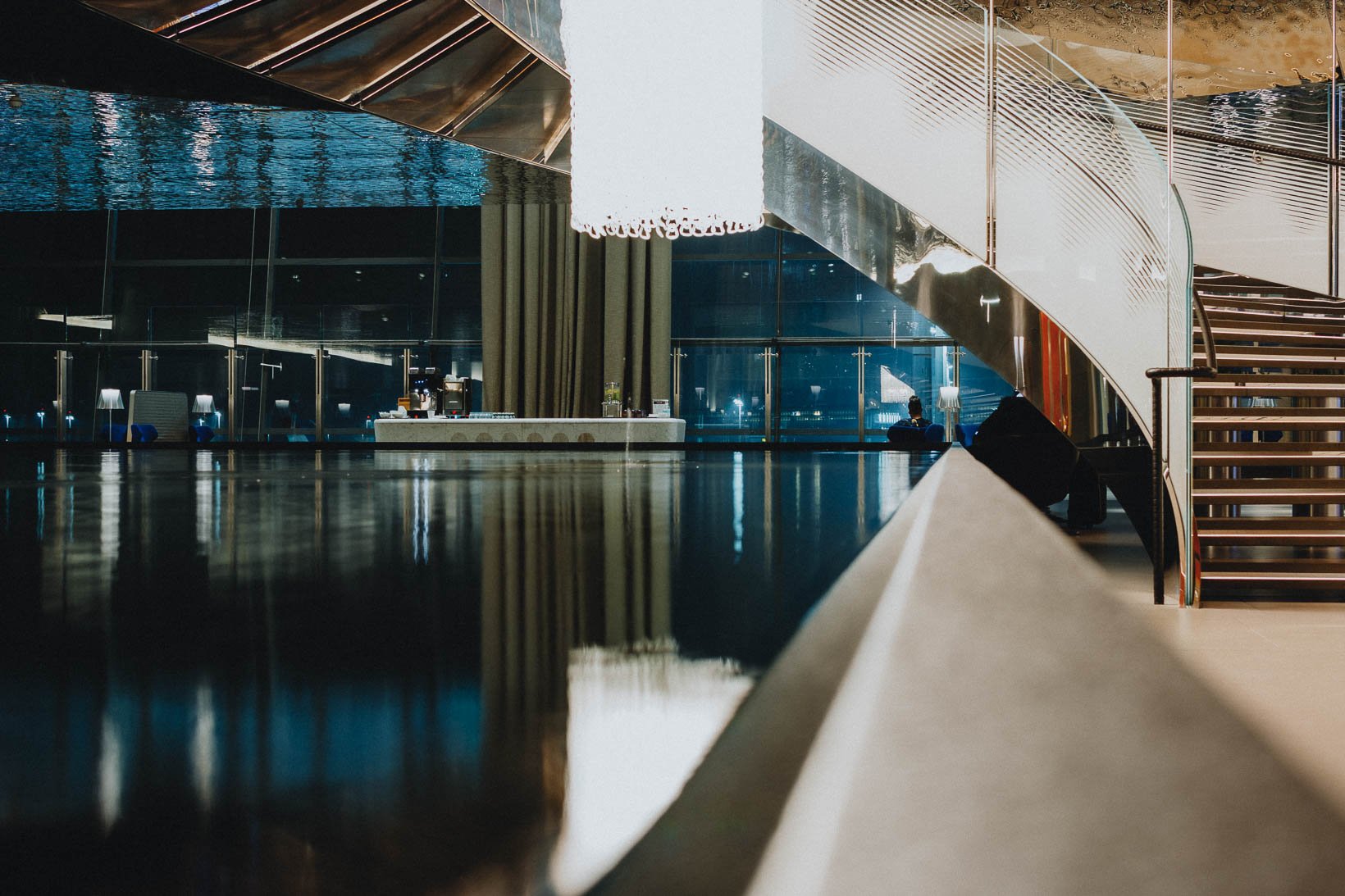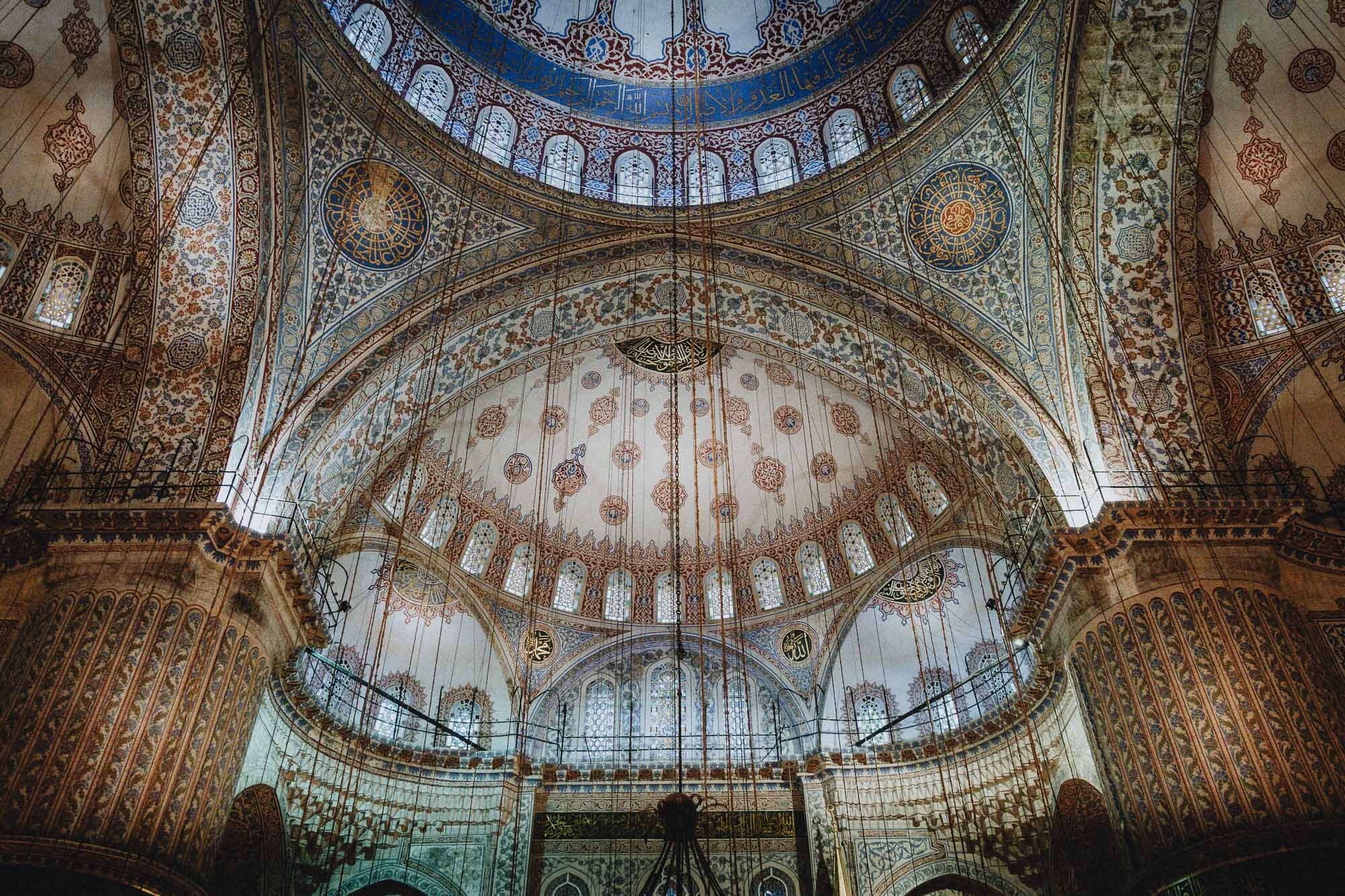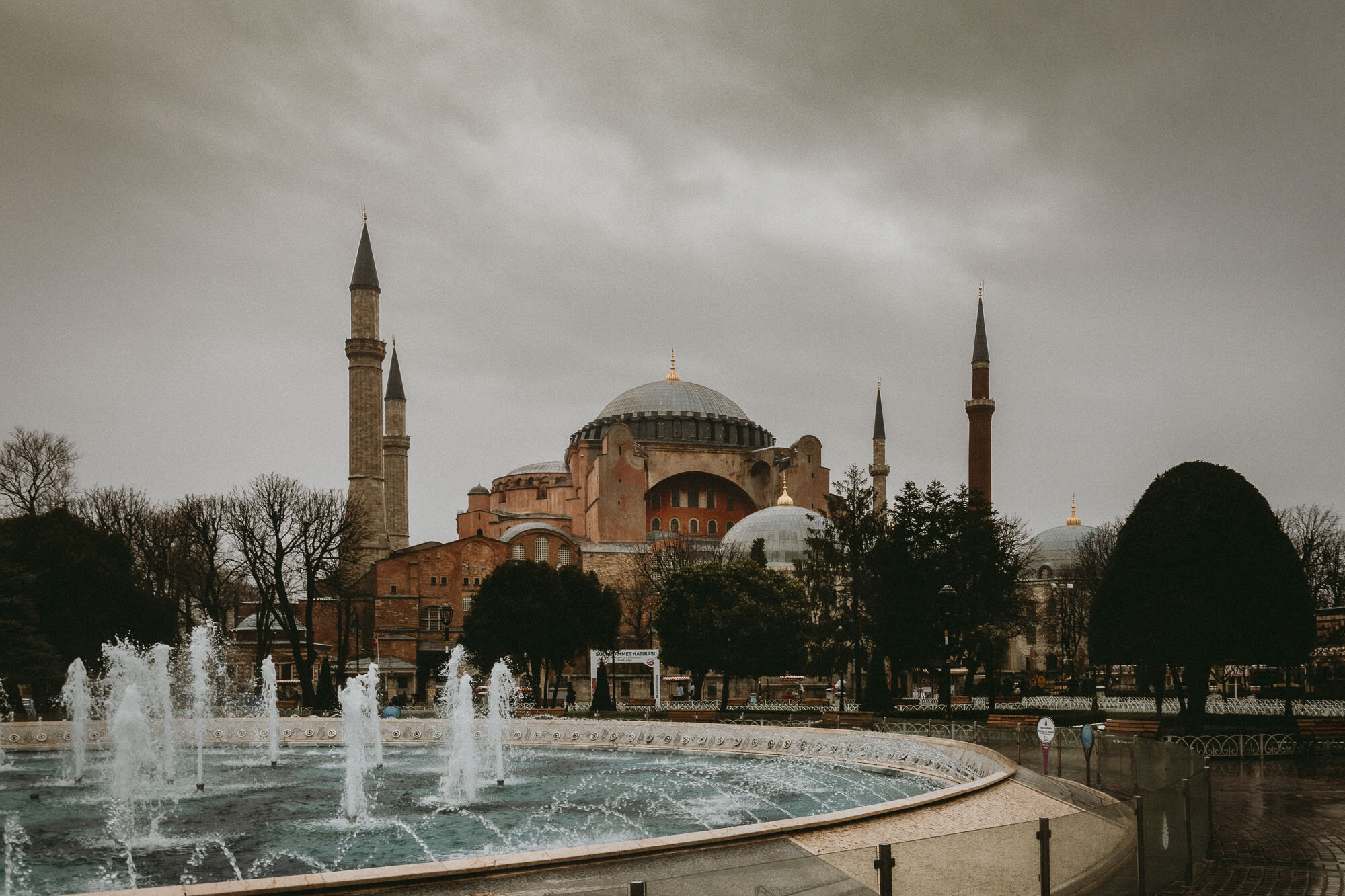As a photographer, I'm always on the lookout for stunning architectural locations to capture. Recently, I had the opportunity to visit the Doha International Airport, and I was blown away by the beauty and innovation of its design.
From the soaring arches of the central concourse to the intricate geometric patterns of the Al Mourjan Lounge, the airport is a photographer's paradise. Every detail has been carefully considered, and the result is a space that is both functional and visually striking.
But it's not just the large-scale architecture that makes the Doha International Airport so captivating. The airport is full of smaller details that are just as visually striking. The lush indoor gardens, for example, are a refreshing oasis that offers a welcome respite from the hustle and bustle of travel.
And then there's the lounge. This space is a photographer's dream, with its sweeping curves, warm color palette, and stunning geometric patterns. Whether you're looking to capture the intricate details of the architecture or simply want to snap a few photos of the incredible views, the lounge offers endless photo opportunities.
Of course, as with any photography location, it's important to be respectful of the airport's rules and regulations. Be sure to check with airport security before setting up any equipment, and always be mindful of other travelers who may be passing through the space.
In conclusion, the Doha International Airport is a must-visit location for any photographer interested in architecture and design. From the grand, sweeping gestures of the central concourse to the small, intricate details of the Al Mourjan Lounge, the airport offers endless opportunities to capture stunning images. So the next time you find yourself passing through Doha, be sure to pack your camera and prepare to be inspired.
